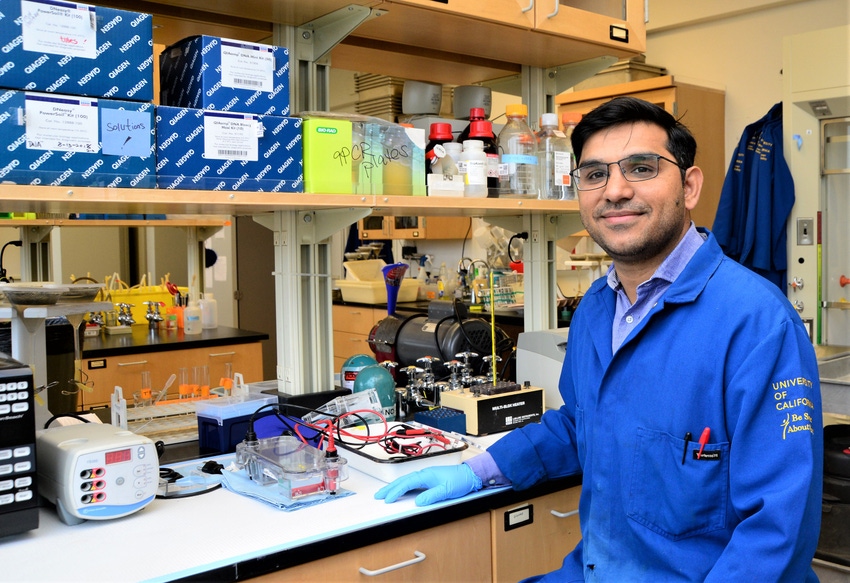
An international team of 10 scientists, led by plant nematologist Shahid Siddique, a former research group leader at the University of Bonn, Germany, and now an assistant professor in the University of California-Davis Department of Entomology and Nematology, has discovered the role of a plant's endodermal barrier system in defending against plant-parasitic nematodes.
“We discovered that the integrity of the endodermis—a specialized cell layer that surrounds the vascular system and helps regulate the flow of water, ions and minerals--is important to restrict nematode infection,” said Siddique, who joined the UC Davis faculty in March after serving several years at the University of Bonn.
“We found that having defects in endodermis make it easier for parasites to reach the vascular cylinder and establish their feeding site. Although, this finding is a result of basic research, it opens new avenues to for breeding resistance against cyst nematodes in crops.”
The research, “Root Endodermal Barrier System Contributes to Defence against Plant‐Parasitic Cyst and Root‐Knot Nematodes,” is published in the July 19th edition of The Plant Journal.
Siddique collaborated with scientists from Germany, Switzerland and Poland: Julia Holbein, Rochus Franke, Lukas Schreiber and Florian M. W. Grundler of the University of Bonn; Peter Marhavy, Satosha Fujita, and Niko Geldner of the University of Lasuanne, Switzrland; and Miroslawa Górecka and Miroslaw Sobeczak of the Warsaw University of Life Sciences, Poland.
“Plant-parasitic nematodes are among the most destructive plant pathogens, causing agricultural losses amounting to $80 billion annually in the United States,” said Siddique. “They invade the roots of almond, tomato, beets, potato or soybeans and migrate through different tissues to reach the central part—the vascular cylinder--of the root where they induce permanent feeding sites.”
“These feeding sites are full of sugars and amino acids and provide the parasite all the nutrients they need,” Siddique explained. “A specialized cell layer called the endodermis surrounds the vascular system and helps regulates the flow of water, ions and minerals into and out of it. However, the role of endodermis in protecting the vascular system against invaders such as nematodes had remained unknown.”
'Tremendous' yield losses
In their abstract, the scientists noted that plant-parasitic nematodes (PPN) “cause tremendous yield losses worldwide in almost all economically important crops. The agriculturally most important PPNs belong to a small group of root‐infecting sedentary endoparasites that includes cyst and root‐knot nematodes. Both cyst and root‐knot nematodes induce specialized long‐term feeding structures in root vasculature from which they obtain their nutrients.”
“A specialized cell layer in roots called the endodermis, which has cell walls reinforced with suberin deposits and a lignin‐based Casparian strip (CS), protects the vascular cylinder against abiotic and biotic threats,” the researchers explained. “Until now, the role of the endodermis, and especially of suberin and the CS, during plant–nematode interactions was largely unknown.”
The team analyzed the role of suberin and CS during interaction between Arabidopsis plants and two sedentary root parasitic nematode species, the cyst nematode Heterodera schachtii and the root‐knot nematode Meloidogyne incognita. “We found that nematode infection damages endodermis leading to the activation of suberin biosynthesis genes at nematode infection sites.”
The research was funded by a grant from the German Research Foundation.
Source: University of California Division of Agriculture and Natural Resources, which is solely responsible for the information provided and is wholly owned by the source. Informa Business Media and all its subsidiaries are not responsible for any of the content contained in this information asset.
About the Author(s)
You May Also Like




